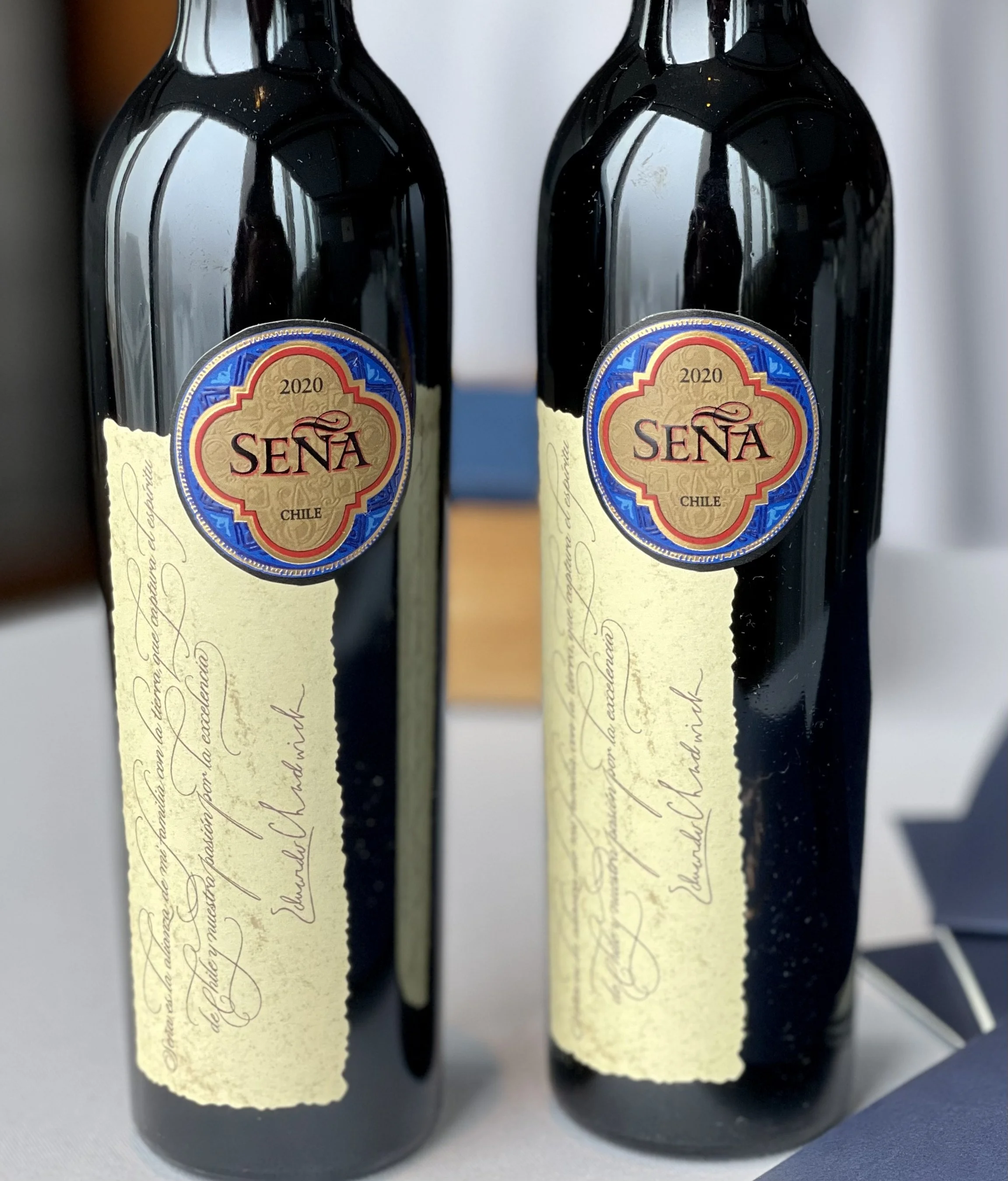Seeing the Potential of Chile's Fine Wines Through Viña Sena and Viñedos Chadwick
/Photo: World Atlas
Chile is a viticultural paradise, a unique mix of geography and climate that make it ideal for winemaking. The country is a thin strip of 2,700 miles long and only 200 miles at its widest point. It is made up of diverse, fertile soils and a hot, dry climate that is moderated by the cooling breezes of the Pacific Ocean and the Andes Mountains. Because of these conditions, the country is able to make a wide variety of wines using many different grape varieties.
Yet, despite the richness of Chile’s land, and partly because of it, many producers of fine Chilean wine have had a rough go of it, particularly when trying to sell their wine in the United States.
Chile’s ability to grow large amounts of grapes with ease led to the mass-production of many of its wines, and in the ‘80 and ‘90s, Chile began flooding the U.S. market with simple, fruity, inexpensive wines meant for everyday drinking. These wines became very popular in the United States as they are considered a good value for the money.
However, Chile’s reputation as a producer of low-cost wines seems to have left no space for the premium wines. Today, it’s hard to get Americans to spend much more than $20 for a bottle of Chilean wine, yet many of the country’s best quality wines cost upwards of $100. And so, the challenge during the last couple of decades has been to get Chile’s fine wines recognized internationally.
Photo of Eduardo Chadwick: Lisa Denning
Enter Eduardo Chadwich
As a producer of some of Chile’s top wines, Eduardo Chadwick has been on a decades-long mission to bring recognition to his beloved country’s fine wines.
The Chadwick family’s winemaking history dates back to the 1870s and today, Eduardo Chadwick carries on his family’s legacy as President of Viña Errázuriz. Additionally, he has created two personal projects: Viña Seña, co-founded in the mid-1990s with Napa Valley icon Robert Mondavi, and Viñedo Chadwick, an homage to his father Alfonso who passed away in 1993.
With Viña Seña, Eduardo has created an icon wine, meaning a wine of very high quality and typically the first within a particular region. Viña Seña’s 42 hectares of Aconcagua Valley vineyards are biodynamically-certified and the wine is made from a blend of six classic red grape varieties: Cabernet Sauvignon, Merlot, Carmenère, Cabernet Franc, Petit Verdot and Malbec.
Viñedo Chadwick, on the other hand, is made up of 15 hectares of mostly Cabernet Sauvignon in the Maipo Valley, at the foot of the Andes Mountains.
Photo: Lisa Denning
Photo: Lisa Denning
Recognition at Last: The Berlin Tasting
The Chadwick family tradition has always been focused on the production of quality wines. Eduardo Chadwick, frustrated with the lack of interest in Chile’s fine wine market, came up with the idea to organize a ten-year series (‘04-’14) of blind tastings around the world. The first one, held in Berlin, was called The Berlin Tasting and had the support of the late Steven Spurrier, creator of the famous 1976 Judgement of Paris that proved California wines could stand up to the best of the French.
Chadwick’s hope was to put Chile on the fine wine map, however, he never expected the huge success that his wines would achieve at the tastings. Both Viña Seña and Viñedos Chadwick received top scores, placed amongst (sometimes above!) First Growth Bordeaux estates like Lafite, Latour, and Margaux, as well as top Super Tuscans, showing the world that Chile could join the ranks of the best wines in the world.
“I think Seña and Chadwick have significantly helped in realizing this dream of getting recognition for Chilean wines,” says Chadwick of his award-winning wines.
Eduardo Chadwick and Robert Mondavi at Seña’s Vineyard,2003. Photo taken from the book, Seña, An Inspiring Journey
Photo of Viña Seña Vineyards taken from the book The Berlin Tasting 15th anniversary, Uncorking the Potential of Chile’s Terroir.
Wines To Make You Happy
At a recent lunch at Manhatta in New York City, Chadwick presented journalists the new release (2020) of Viña Seña, as well as several back vintages: 2015, 2009, and 1996. He also presented four vintages of Chadwick: 2020, 2018, 2014, and 1999. Two of these wines, Viña Seña 2015 and Viñedo Chadwick 2014, scored a perfect 100 points from world-renowned wine critic James Suckling.
Chadwick says that as a winemaker he aims for more finesse, and less richness and power. And indeed, while the Chadwick Cabernets have a more robust tannic structure than the Seña, there is a common thread running through both wines in each vintage I tasted: freshness, with a racy acidity and ripe, refined tannins. There’s also a terrific intensity of aromas and flavors, quite present but not in an overbearing way. It was interesting to see that the older vintages, 2009, 1999 and 1996, had retained their vigor and were a pleasure to pair with dishes like braised short rib and hazelnut-crusted duck breast.
I would be happy with any of these wines during a meal, especially if paired with hearty dishes like roasted lamb chops, pasta with portobello mushrooms and full-flavored cheeses. These wines deserve to be celebrated as the fine wines they are, and thanks to people like Eduardo Chadwick, Chile is gaining a reputation for producing wines of complexity and nuance that are able to age and evolve over many years.











